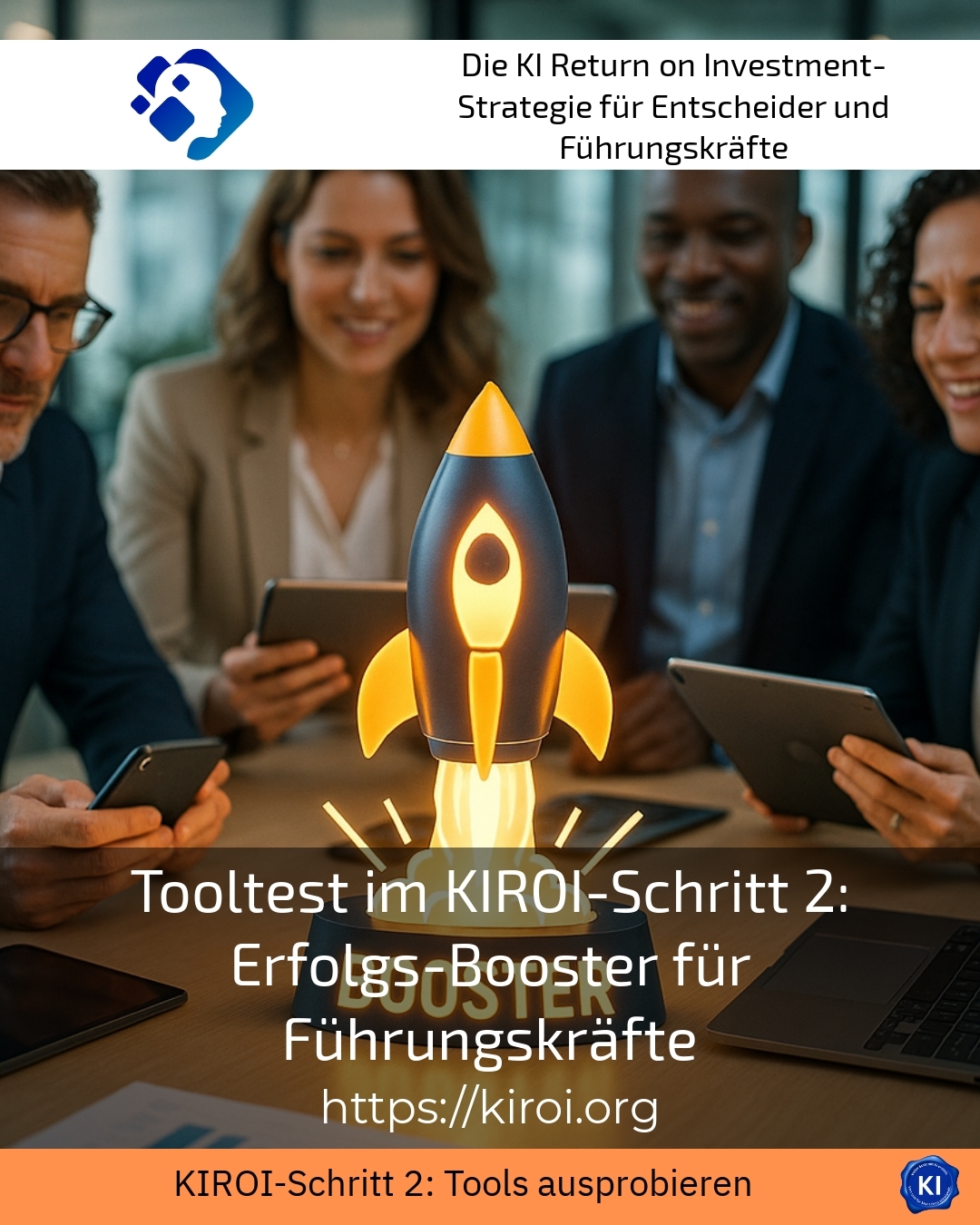In today's digital age, managers are faced with the challenge of having to make complex decisions in ever shorter timeframes. The Tooltest in KIROI Step 2 becomes a decisive success booster here because it systematically helps to select suitable tools and thus organise management processes more effectively. This structured method allows the requirements to be precisely analysed and suitable tools to be precisely tested.
Tool test in KIROI step 2: Basis for a targeted selection
The Tooltest begins with a comprehensive analysis of the individual challenges in the company. Managers define use cases, i.e. specific application scenarios in which digital tools should provide the greatest added value. This clear delineation enables a targeted review of software options or applications. For example, a medium-sized company can significantly increase team efficiency through the targeted selection of AI-supported project management tools, while a start-up can improve its agility with innovative collaboration platforms.
An internationally active group used the Tooltest, to evaluate a reporting tool that consolidates data from different departments. The standardised approach helped to avoid costly mistakes and increase acceptance among employees. The introduction of a suitable tool was supported and implemented smoothly.
Managers in the healthcare sector also benefit from the Tooltest. When it comes to selecting software for patient management or documentation, you can use this method to ensure that data protection and compliance requirements are met. This keeps the focus on the essentials - safe and efficient patient care.
Practical examples from business practice
In the retail sector, the Tooltest The company helped a management team to find a suitable solution for inventory management. The structured evaluation of various providers led to a transparent decision and smooth integration into existing systems.
In the education sector, school headmasters used the Tooltest learning platforms and were thus able to select suitable tools to support their lessons digitally. The clear structure offered the advantage of taking better account of user-friendliness and data protection requirements.
In the automotive industry, one team used the Tooltest, to evaluate AI-supported assistance systems for production. The detailed analysis of the use cases led to a selection that increased efficiency and improved employee safety at the same time.
Success factors for managers when using the tool test
A key success factor in the Tooltest is the active involvement of the relevant stakeholders. Managers not only support the process, but also integrate the perspectives of employees, the IT department and external consultants. This significantly increases the acceptance of the selected solutions. It is also important to carry out the test iteratively: Initial selection criteria are checked and adjusted if necessary in order to gradually arrive at the optimum solution with greater certainty.
To support the decision-making process, it is advisable to define clear evaluation criteria such as user-friendliness, scalability and integration with existing systems. One example of this is a financial services provider that used such criteria to significantly simplify its selection and increase employee efficiency in the process.
BEST PRACTICE with one customer (name hidden due to NDA contract)
BEST PRACTICE with one customer (name hidden due to NDA contract) is demonstrated by how the tool test was used in a multinational company to select a CRM solution. The process began with a precise definition of the requirements in sales and customer service. By transparently comparing several tools, employees were able to identify the best provider, which led directly to a noticeable increase in sales and improved customer loyalty. The participative approach also significantly boosted acceptance and utilisation rates.
Conclusion: The tool test as a companion for change projects
The Tooltest in KIROI Step 2 helps managers to reduce the complexity of selecting digital tools. It provides valuable impetus to take a structured approach and identify the best solutions for individual requirements. Especially in times of rapid technological developments, this method can help to provide targeted support for projects and ensure sustainable success. Managers often report that the tool test gives them clear orientation and makes decision-making processes much easier.
My analysis
The use of the Tooltest is an effective success booster for managers who operate in dynamic environments. It helps to manage complexity and precisely map individual requirements. Examples from various industries show that the tool test not only minimises wrong decisions, but can also increase acceptance and efficiency. This structured approach is therefore an important building block in change management and digital transformation.
Further links from the text above:
Tool test in KIROI step 2: How managers find their AI tool
Tool test in focus: KIROI step 2 for managers
AI tools for managers FREE OF CHARGE - step2
For more information and if you have any questions, please contact Contact us or read more blog posts on the topic Artificial intelligence here.















